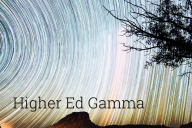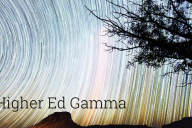You have /5 articles left.
Sign up for a free account or log in.
In a grotesquely unfair 1981 review of TJ Jackson Lears’s No Place of Grace, the Rutgers intellectual and cultural historian’s classic analysis of anti-modernism in American thought and the arts, Kenneth Lynn, a Johns Hopkins professor and professional curmudgeon, dismissed the work as a textbook example of anti-American studies.
If only Lynn (who died in 2001) were alive to see the field today.
Criticisms of American studies, which come from without and within, are widespread. Critics argue that the field has become excessively politicized and overly critical of the United States, its history and its institutions. They point to the field’s emphasis on histories of oppression, colonialism, racism, sexism and economic inequality.
Critics also focus on the field’s embrace of theories and methodologies from critical theory, postcolonial studies, gender studies, and critical race theory. Critics argue that these theoretical frameworks predispose scholars to focus on power dynamics and conflict, leading to interpretations of American culture and history that they say are unduly negative. They also claim that the field largely rejects the idea of a coherent, positive American identity—despite the fact that millions of immigrants still seek to come to the United States.
Then, there’s the argument that the writing style that typifies the field has become deliberately obscurant—that the field’s key works are unnecessarily complex, abstract and inaccessible to the general public and even to scholars outside of specific subfields. Critics point to the heavy reliance on jargon that is often impenetrable to those not deeply versed in the discipline, and serves more to exclude than to elucidate. They also point to complex sentence structures and abstract syntax, which can make these works difficult to read and understand, even for other academics, and to the level of theoretical density and abstraction that require a background in certain philosophical or critical theories to understand. This can make the work seem detached from practical concerns or real-world applications.
Critics further contend that obscurantism acts as a form of gatekeeping, maintaining barriers to entry into academic conversations and reinforcing hierarchies within academia. Whereas some see the use of dense, complex language as a signal of intellectual rigor and depth, others view it as a deliberate tactic to exclude or intimidate those not initiated into the specific academic discourse. Far from a sign of erudition, such a style is a form of exclusion.
For a taste of the field’s internal critics, you might look at:
- Richard S. Lowry’s “American Studies, Cultural History, and the Critique of Culture,” which contends that the field had isolated itself by embracing trendiness, jargon, excessive methodological naval-gazing, subject-matter narrowness, and, especially, a stress on discourse as opposed to agency, cultural critique as opposed to cultural history, a lack of reference to scholarship outside the field, the treatment of teaching as a political act, and overgeneralizations and simplifications about the relationship between the United States as a nation-state and the subcultures that exist within it.
- Ilan Stavans and Steven G. Kellman’s “The Fallacy of American Studies: A Conversation,” which argues that despite the field’s focus on matters of race, class, gender and geography, it has failed to pay sufficient attention to languages other than English in American cultural production.
- Steven Watts, in “American Studies and Americans: A Crank’s Critique,” insists that the field “has become largely irrelevant to the great mass of Americans,” that it is “socially inbred, pedagogically indecipherable, politically marginalized, intellectually self-indulgent, and impossibly elitist.”
- Simon J. Bronner’s “The Death of American Studies,” which argues that the field began to undergo a decline in the late 20th century when it embraced critical studies and broke away from the Americanistics approach associated with European and other foreign U.S.-studies centers and associations.
American studies has long been a field engaged in an unusually high degree of introspection and self-criticism, and many of the criticisms that the field encounters are products of gross generalizations that tell us little about specific programs, courses, books or articles. More than that, the criticism of American studies is, of course, part of a larger conversation about the purpose of academic disciplines, the value of interdisciplinary scholarship, and the ways in which knowledge is communicated and shared both within the academic community and with the public at large.
That said, American studies today bears scant resemblance to the field when I entered graduate school in 1973. Since the mid-1970s, the field has undergone a series of radical paradigm shifts. During the field’s foundational period in the 1930s and 1940s, it focused on the supposedly unique character of American culture through the lens of American exceptionalism. This perspective emphasized the distinctiveness of the United States in terms of its democratic ideals, political institutions and cultural contributions. The methodological approach was largely historical and literary, aiming to construct a cohesive narrative of American national identity and heritage.
The field’s founding figures tended to study the national myths, symbols and narratives encoded in American literature, history and popular culture and that have shaped a distinctive American identity. This approach viewed culture as a text that could be read and interpreted to reveal insights about American society and its underlying values.
Scholars who adopted this approach were particularly interested in how myths and symbols contributed to a sense of national identity, exploring themes such as the frontier, the American Dream, individualism and democracy. Although interdisciplinary in nature, the myth and symbol approach often relied on literary analysis as a primary method, examining classic American literature, folklore and other cultural texts to identify recurring themes and symbols.
The most influential scholars included Henry Nash Smith, whose Virgin Land (1950) analyzed the myth of the West and its impact on American culture and identity; R.W.B. Lewis, whose The American Adam (1955) showed how early American writers conceived of the United States and its inhabitants as embodying the potential for a new beginning, distinct from the historical and social burdens of the Old World; and Leo Marx, whose The Machine in the Garden(1964) explored the tension between the pastoral ideal and technological progress in American literature and culture.
Works like these provided a framework for understanding the thematic aspirations and tensions within American literature and culture. But as critics pointed out, these works tended to overlook or marginalize the experiences and voices of women, racial minorities and other oppressed groups in the American narrative. They argue that the vision of innocence and new beginnings can obscure the histories of violence, displacement and inequality that are also part of the American story.
During my very first semester at Yale, Richard Slotkin released the first of a series of studies that built on the myth-and-symbol school only to reveal that it could yield a very different perspective on the American past. In Regeneration Through Violence (1973), The Fatal Environment (1985), and Gunfighter Nation (1992) he exposed the ugly underside of the mythology of the American West.
Slotkin argued that the myth of the frontier portrayed violence as a regenerative force, essential for the progress and expansion of American civilization, suggesting that through violence against perceived “savagery” (often embodied by Native Americans) American society could renew itself and expand its territories. This idea has justified various forms of violence throughout American history, from the displacement and eradication of Indigenous peoples to foreign wars.
The mythology of the American West involved stark moral and racial dichotomies, casting white settlers and cowboys as heroes in a savage landscape, while Native Americans and other nonwhite groups are dehumanized and depicted as obstacles to civilization and progress. This racial framing not only justified the dispossession and violence against Indigenous peoples but also reinforced racist ideologies that have persisted in American culture.
Slotkin’s work also connects the mythology of the frontier with the concept of Manifest Destiny—the belief that the United States was divinely ordained to expand across the North American continent and beyond. This ideology supported not only the westward expansion but also later instances of American imperialism. The frontier myth, with its emphasis on conquest and expansion, provided a narrative framework that rationalized American expansionism as a natural and noble endeavor.
Slotkin showed how the frontier myth became deeply embedded in American cultural and political consciousness, influencing the nation’s self-image and foreign policy. The glorification of the frontier experience and the valorization of violence as a means of problem-solving have had profound implications for American society, including shaping attitudes toward gun ownership, law enforcement and military intervention.
During the 1970s, American studies underwent a number of turns. It embraced social history (for example, by exploring working class and popular cultures), anthropology (with its emphasis on ritual and rites of passage), and, most important of all, cultural studies. The “cultural turn” shifted the field’s focus from purely historical and literary analysis to a broader consideration of American culture in all its forms, including popular culture, media and everyday practices.
This period also marked a move away from the idea of a unified national culture toward an acknowledgment of diversity, conflict and the experiences of marginalized groups. Scholars began to critically examine issues of race, gender, class and ethnicity.
Later in the late 20th century, American studies increasingly incorporated theoretical frameworks from poststructuralism, postcolonial studies, gender studies and critical race theory. This shift sparked a critical reevaluation of previously accepted narratives about American history and culture, questioning the assumptions underlying earlier conceptions of identity, nationhood and progress.
The late 20th and early 21st centuries have seen a further paradigm shift toward global and transnational perspectives. This approach situates American culture within a global context, examining how it is shaped by—and shapes—global processes, migrations and exchanges. Scholars in the field frequently explored the interconnectedness of cultures and the ways in which American identity and culture are influenced by and interact with other cultures around the world.
Today, American studies frequently finds itself at the center of ideological and cultural debates due to its critical engagement with issues of race, gender, class and American identity. Some critics, even on campus, argue that the field has become too politicized or that it has strayed from its original objectives by focusing excessively on critical theory at the expense of broader cultural and historical studies.
Still others claim that the field has become ethnic studies or gender and sexual studies lite. They assert that the field lacks the depth, specialized focus, critical rigor, and specific methodologies and theoretical frameworks found in more dedicated programs devoted to the study of race, ethnicity, gender and sexuality.
As American studies has integrated themes and approaches from ethnic studies and gender and sexuality studies, some critics view this as a dilution rather than an enrichment. In the academy’s increasingly competitive landscape of academia, where departments and programs vie for resources, students, and institutional support, American studies programs often lack a constituency dedicated to the field’s survival.
Of course, the field’s proponents argue that its interdisciplinary nature is a strength, allowing for a holistic examination of American culture that includes but is not limited to the critical insights offered by more specialized programs. They contend that American studies can offer a unique space for synthesizing diverse perspectives and methodologies.
In an important book published in 2001 entitled American Studies in a Time of Danger, George Lipsitz posed a question that American studies scholars still debate: ;What is the value of the study of a specific national culture in an age of globalization and mass immigration, when place, culture and identity no longer coalesce in ways they once did?
Various scholars have answered that question in contrasting ways. In his 2002 book, The Death of a Nation, the late David W. Noble called for a multicultural, post-national form of American studies. Whereas an earlier generation of artists, authors and historians had helped construct an exclusionary culture that had relegated Blacks, Catholics, Hispanics, Jews, Native Americans, women and other groups to the margins, the task facing the field was to reclaim alternative class, racial, and regional narratives and recover the forces that have contributed to a process of Americanization outside the United States.
George Lipsitz’s answer was to make the field a “progressive force” and a “site for exploring the chasm between the ideal and the real in the United States” and that its faculty and students should play “crucial roles” in “collective social struggles.”
Since the 1930s, the field of American studies has offered a crucial space for exploring the complexities of American culture, engaging in cultural criticism and examining the intersections of history, literature, politics and society. But its future is very uncertain. Today, the debate over American studies’ core identity and purpose is taking place in an especially fraught political and economic context, as many institutions cut back on fields regarded as marginal and as red state legislators seek to eliminate programs they perceive as activist or politicized.
Despite these challenges, American studies has the potential to sustain itself and remain relevant by adapting to a shifting academic and societal landscape. But this will hinge, in my view, on the field’s ability to speak much more accessibly to a broader audience, to reaffirm a commitment to a holistic analysis of American culture that focuses on group interactions within a specific nation-state, and its ability to speak to global interconnections and developments in ways that can speak to those outside the field, whether these are anthropologists, economists, historians, philosophers, political scientists or sociologists.
While American studies faces significant challenges, its core mission—to critically explore and understand the complexities of American culture—remains vitally important. But whether the field will wither or thrive ultimately hinges, I am convinced, on its success in breaking free from the kind of insularity and professional isolation that currently holds it.


